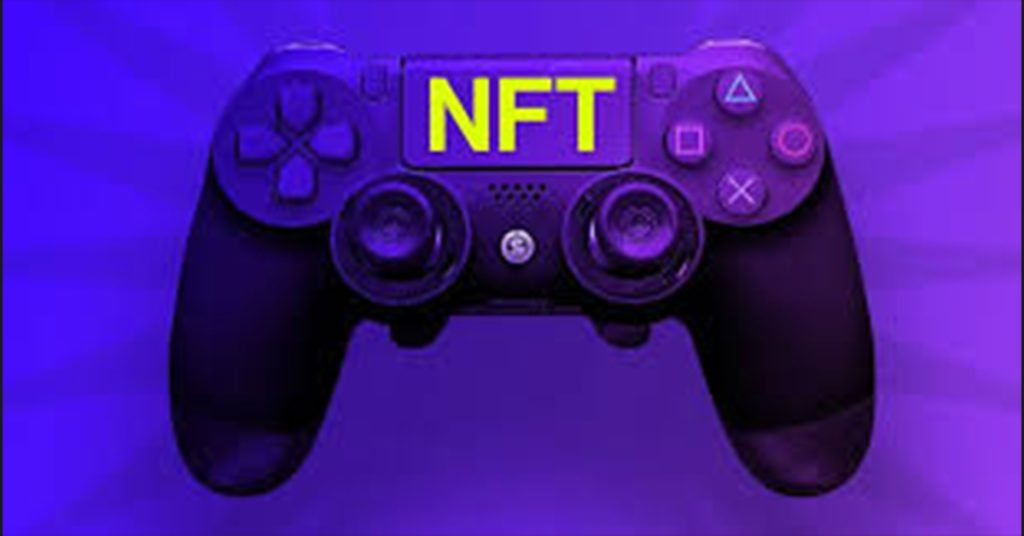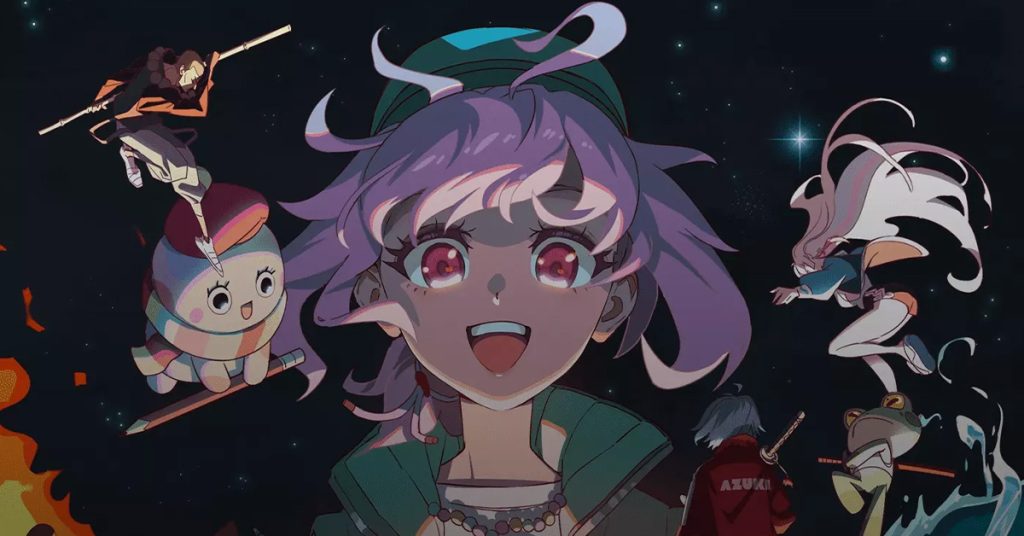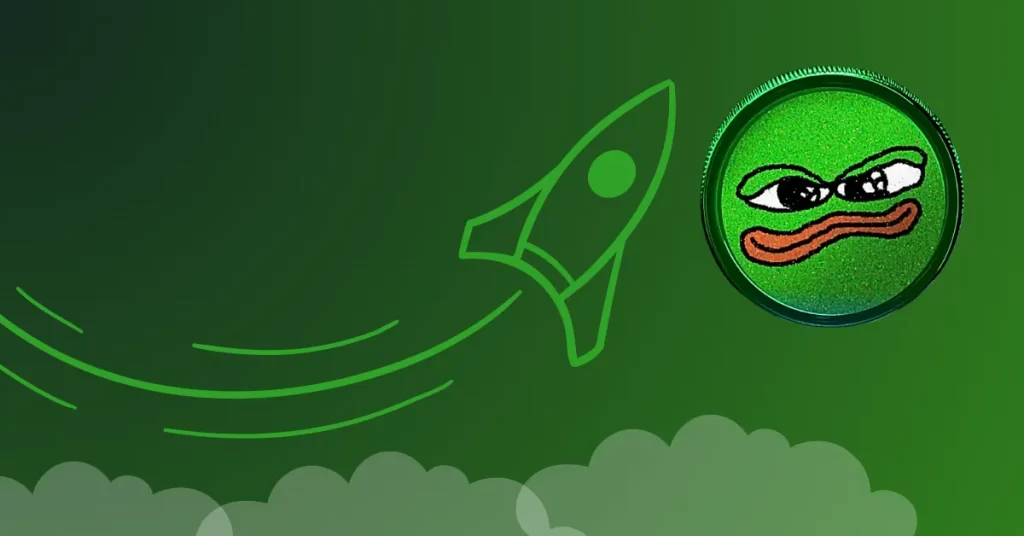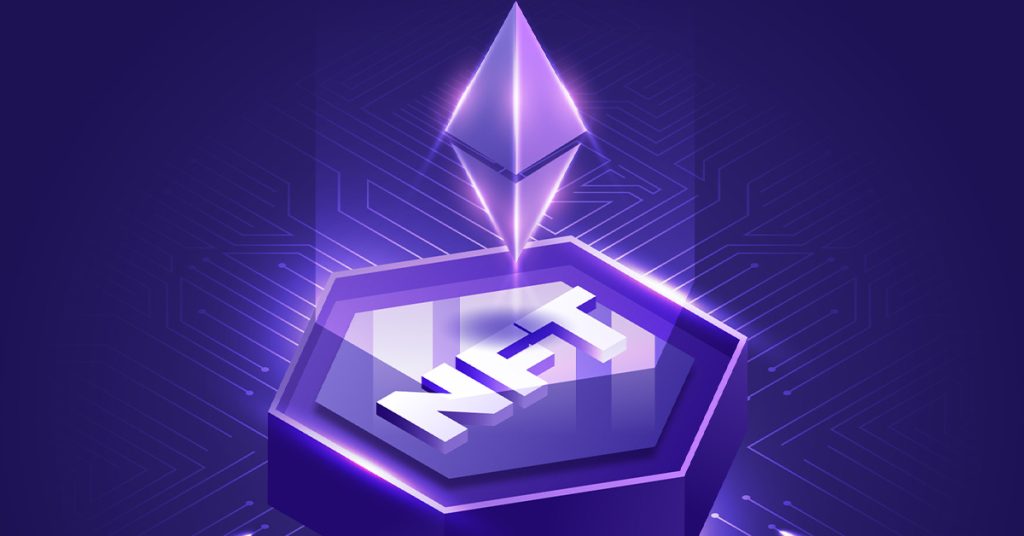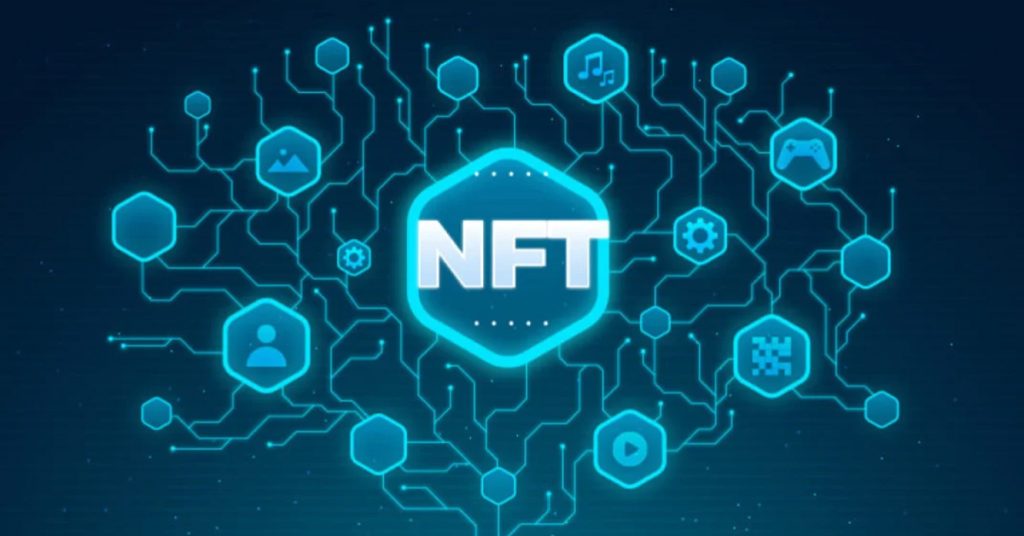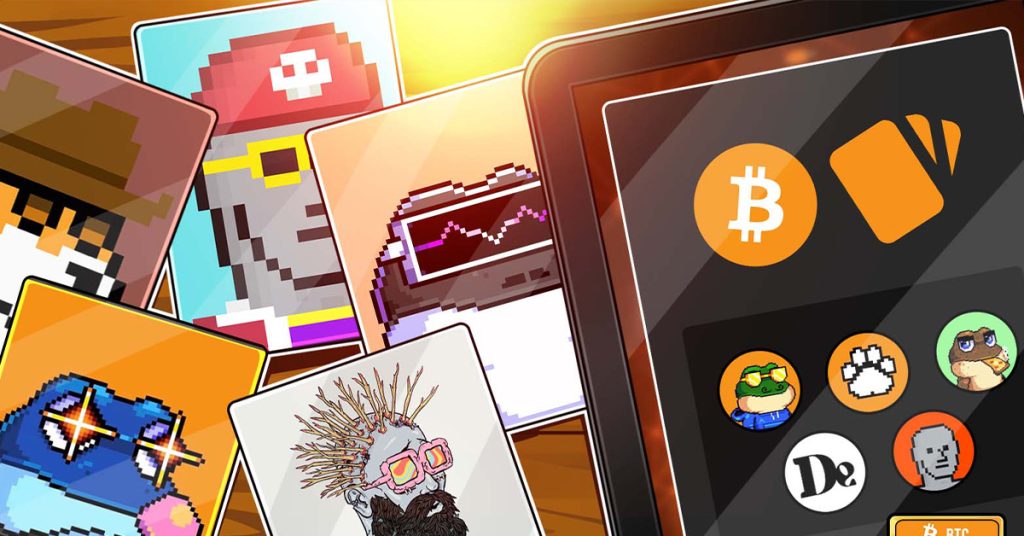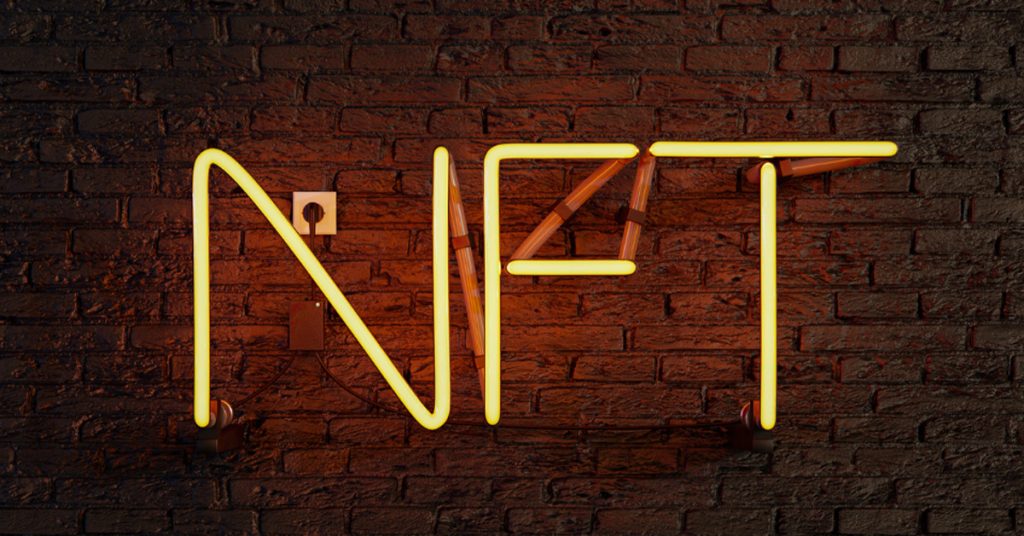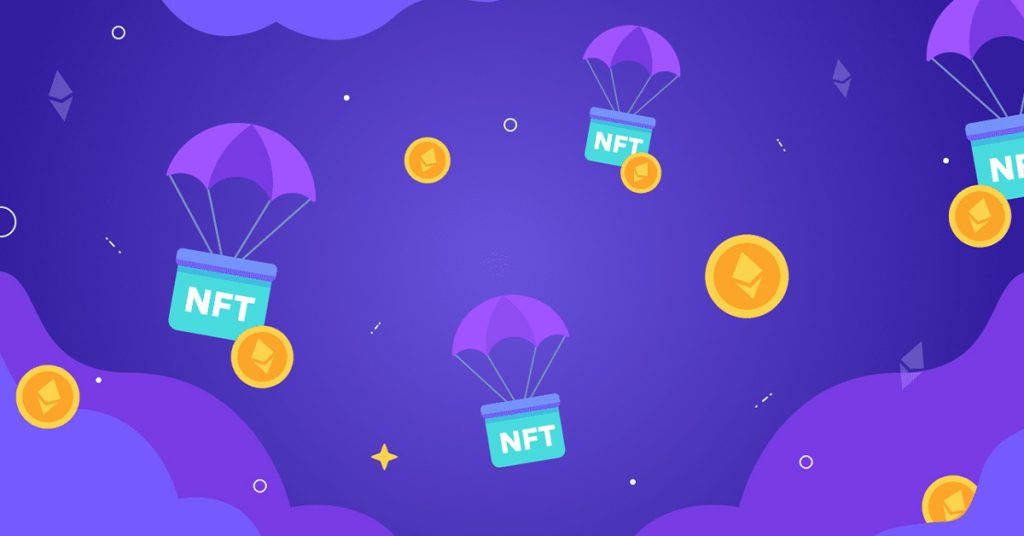What Are ERC-404s and Pandora?
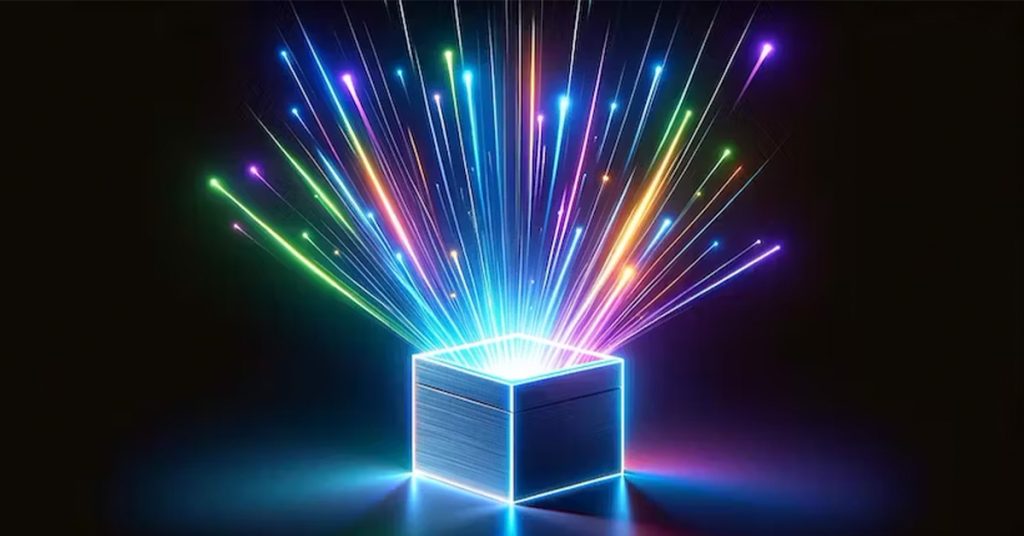
TL;DR
ERC-404 tokens are a new development aiming to combine features of ERC-20 tokens and ERC-721 tokens. This means the creation of NFTs that are interlinked with fungible tokens, enabling built-in NFT fractionalization and immediately increasing liquidity. The leading project pioneering the ERC-404 standard is called Pandora, and prices on Pandora tokens and NFTs have been climbing rapidly.
A new token standard is emerging that has the potential to shake up the way NFTs are traded, opening up liquidity and pushing forward NFT financialization. The token type is called ERC-404, and the key project building on this standard is Pandora, so let’s take a look at what these new tokens actually are, and at what Pandora is developing.
ERC-20 + ERC-721 = ERC-404?
Within the Ethereum ecosystem, we have a couple of dominant token standards: ERC-20 tokens, and ERC-721 tokens. Of these, ERC-20s are fungible, so they’re used for anything where you need a large supply of interchangeable, currency-like tokens, including memecoins, stablecoins, native gaming tokens, and so on. Then, you have ERC-721s, which are non-fungible. That means each token is unique, so these are used for collectibles, such as digital art and PFPs, or in other words, NFTs.
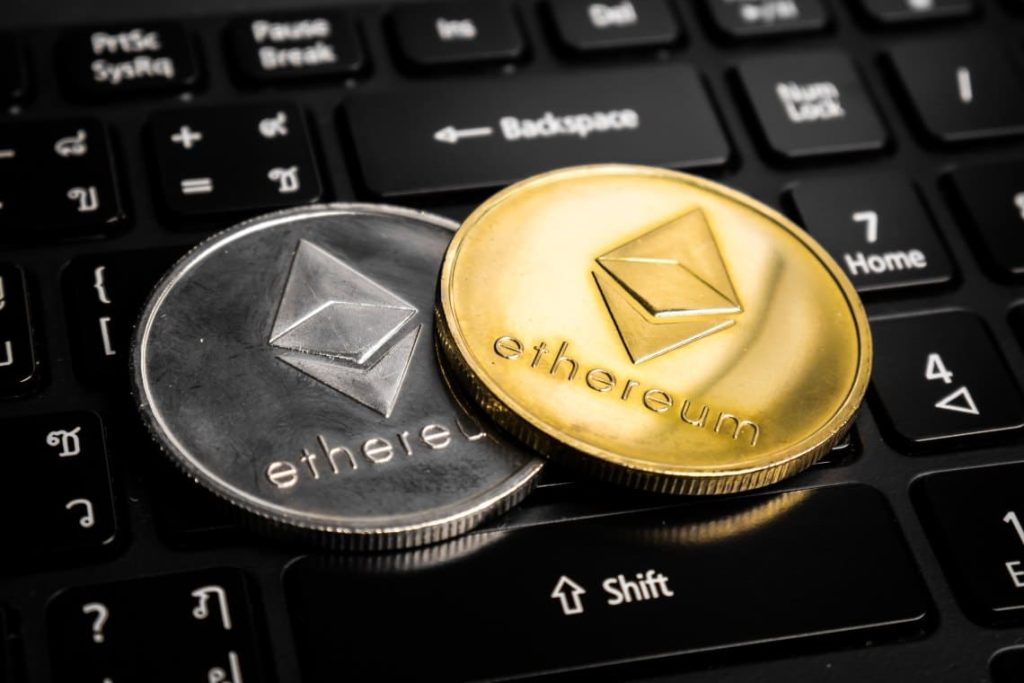
But is it possible to combine the two–fungible ERC-20 tokens, and non-fungible ERC-721 tokens? That’s where ERC-404 tokens come in, as they’re an attempt to create exactly that kind of cross-over, bringing together both fungible and non-fungible elements.
What Are The Advantages of ERC-404s?
In the world of NFTs, there’s a shift towards financialization and finding ways to utilize and trade NFTs as if they were more like regular cryptocurrencies (like altcoins or memecoins.)
One early way to do this–which, it should be noted, hasn’t taken off to a significant degree–was through fractionalization, which means locking up an NFT and creating a large number of fungible tokens to represent it, which can then be traded as if they were shares in the underlying NFT asset.
Fast forward to 2024, and ERC-404 tokens now aim to create NFTs that have fractionalization built in, thereby increasing liquidity from the moment of minting. From there, you can buy and sell whole NFTs, or you can dip into and out of the fungible token supply, with the two components closely connected as part of their design.
To get an idea of how this works in practice, let’s look at Pandora, the project that has pioneered the ERC-404 standard.
What Is Pandora?
Pandora has issued 10,000 fungible tokens, which you can trade on Uniswap just like any other coins. However, if your balance amounts to 1 Pandora, then a Pandora NFT–called a Replicant–will be minted into your wallet.
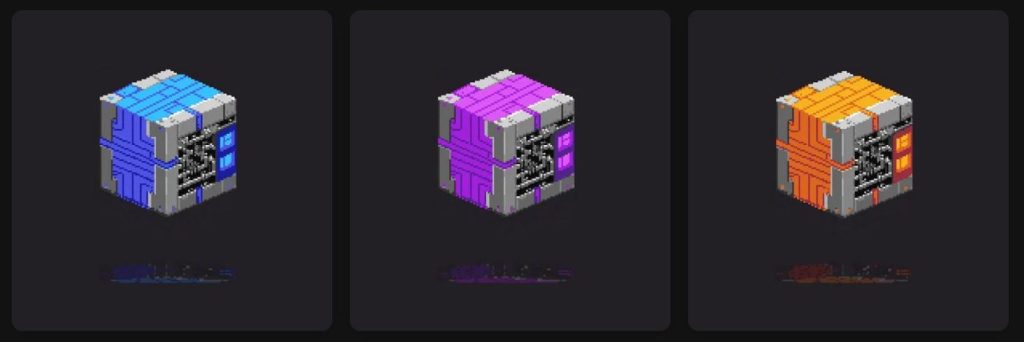
This can be traded in the same way as regular NFTs–the OpenSea and Blur marketplaces both support Pandora–but also, if you sell your Pandora tokens (the fungibles ones) such that you hold a balance less than 1 Pandora, then your Replicant NFT will be burned.
In this way, new NFTs are created and burned dynamically, and there are two ways to gain exposure to Pandora: through buying the NFTs directly, or through buying the connected fungible tokens. Also, if you transfer 1 Pandora token between wallets, the Replicant you hold at the sending address will be burned, and a new one created at the receiving address.
What Is the Utility of Pandora Replicants?

Right now, it’s not known what the Replicant NFTs are actually intended to do. However, there’s a big hint in the name of the project–Pandora–and the fact that the NFTs look like unopened boxes, not to mention that digital containers opening to reveal new items is a common NFT mechanism. It seems very likely, then, that the Replicants will open to reveal something, but what that content might be remains a mystery.
Also adding to the interest, not all the Replicant boxes are exactly the same, as there are different rarity levels, with green boxes the most common, followed by blue, purple, orange, and then red as the rarest type.
How Is Pandora Performing?
At the time of writing (and prices are changing very quickly), the Pandora token has surged to new highs having climbed almost 3,500% since the start of February, while at the same time, Replicant NFTs are trading at a floor price around 10 ETH.
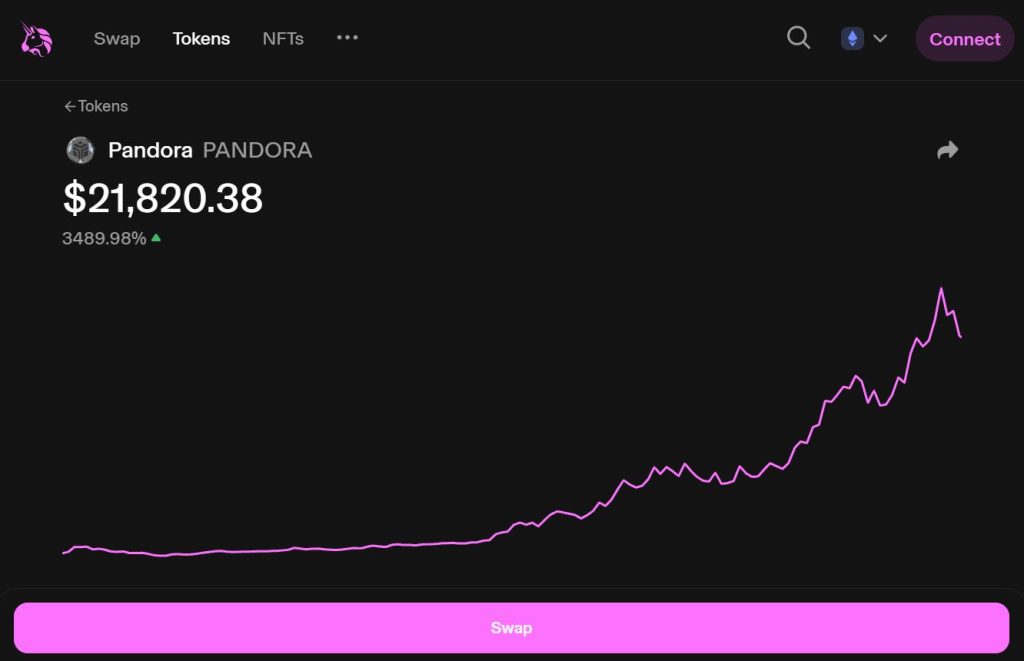
And this explosive performance highlights the benefits of ERC-404s: a 10 ETH floor price looks expensive, but jump over to Uniswap, and you can easily grab a smaller amount of the Pandora token instead. You won’t get the benefits of owning the NFT, but you’ll have some exposure. And on the other hand, anyone who bought Pandora early can easily take some profits off the table but remain exposed, by selling a portion of the token.
What Next for ERC-404s?
ERC-404s are a fascinating innovation with a lot of potential, and with attention soaring around Pandora, we should expect more projects to appear. One contender that Pandora itself has amplified is Froggy Friends, and sticking with the frog theme, a 10K PFP collection with undeniable degen vibes is DeFrogs.
What’s more, making it easier to explore, CoinGecko has added ERC-404 tokens as a new category, and as a measure of how early this standard is, there are currently only eight tokens listed.
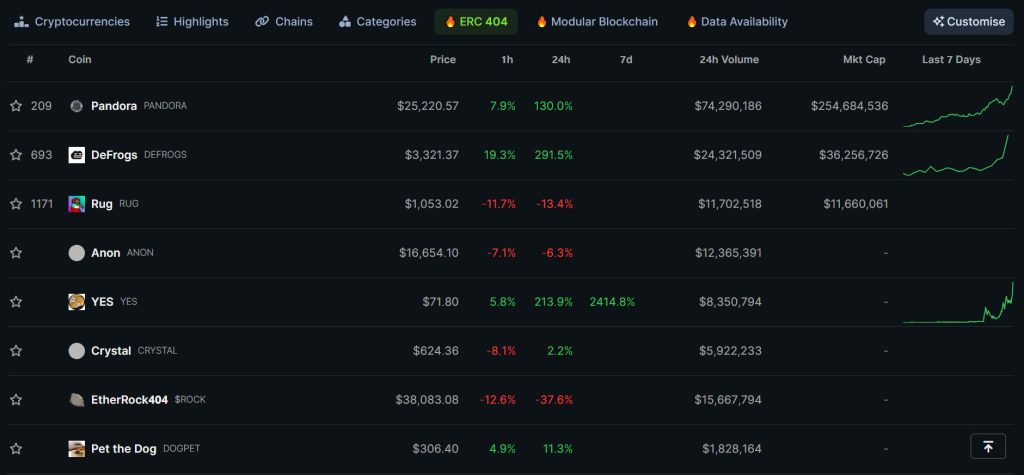
There’s also now a lot of anticipation to find out what the Pandora boxes will do next (presuming that they will, at some point, be opened), with Pandora itself firmly established as the ERC-404 first mover.
Risks and Returns
A risk to keep in mind is that the ERC-404 standard is currently unaudited, meaning it could contain flaws and vulnerabilities. Like anything early in crypto, hazards are increased due to the untested nature of the product, while rug pulls and scams are an ever-present danger.
Also (and again, as with almost everything in crypto), while ERC-404s might create important changes within the NFT space, there’s no guarantee that the idea will stick around and catch on, so remember that any substantial gains can be followed by rapid corrections if attention shifts to a new narrative.





